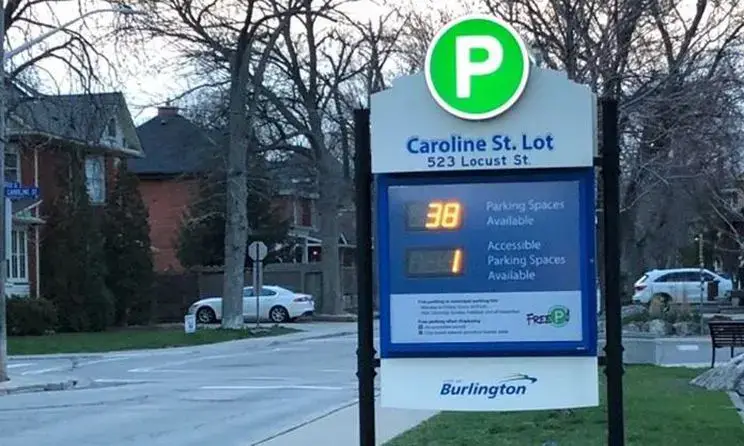Four years ago, the city of Burlington (Ontario, Canada) decided to make parking easier for its citizens. This project monitored more than 450 on-street parking spots and 12 park-and-ride lots to provide real-time information on availability in each zone. It is now that Burlington has decided to start with the smart parking expansion.
The city, with direct access to Lake Ontario, becomes the ideal destination for leisure activities. This is why the city faced mobility and parking problems due to the number of visitors.
The system installed in 2017 by Electromega has U-Spot sensors to better understand driver behavior. U-Flow sensors were also installed in 1 dissuasive parking lot. In addition to a variable signage panel indicating the number of free spaces on the main street of the city.
Burlington has opted for the expansion of the smart parking project following its successful launch in 2017. This expansion will see the installation of almost 650 more U-Spot single space detection sensors, which will be added to the more than 850 spaces already monitored, reaching more than 1,500 sensorized parking spaces.
Thanks to this new installation, residents and visitors will be able to decide more easily where to park when traveling in the city.

Do you want to know how the system works?
Detection with U-Spot sensors:
- The driver goes to a free spot guided by the information displayed on the variable message sign. The U-Spot sensor detects the arrival of the vehicle and sends the information to the platform.
- The platform collects the data and sends the updated information to the panel indicating a less free spot.
- When the vehicle is removed, U-Spot no longer detects its presence, so it sends information again to transmit that the parking space is free again
- From U-Admin the manager can manage the published information, as well as configure, supervise and consult all the information of the system.
Detection with U-Flow sensors:
- The driver goes to a parking lot and accesses it through a well-marked entrance. U-Flow sensor detects the passage of the vehicle and sends the information to the platform via the communication network.
- The platform collects the data and, based on the total capacity of the parking lot, recalculates the free spaces with this new access. It sends the updated data to the variable message signs that will indicate a less free space.
- When the vehicle leaves the area and passes the U-Flow sensor, the process is carried out in reverse. he system indicates one more free space in the parking area.
- Whenever there are reserved spaces (PRM, electric vehicles…) they are monitored with U-Spot sensors.
- From U-Admin the manager can manage the published information, as well as configure, supervise and consult all the information of the system.
Thanks to this simple system, mobility is much more fluid, since citizens go directly to free spaces, avoiding unnecessary turns in search of parking. Pollution and CO2 emissions are reduced proportionally. In this way, residents enjoy a cleaner and more efficient city and a better quality of life. In addition, the use of parking spaces is optimized thanks to real-time information on availability.
Another links of interest:
U-Spot single space detection sensor
…
Would you like to be updated on our news, developments and projects? Subscribe to our Newsletter!